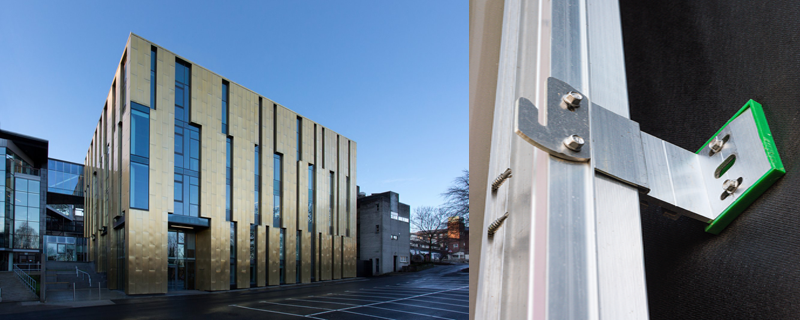The world is reaching a critical tipping point with global warming. Every year, climate records are being routinely broken, CO2 levels in the atmosphere rising annually, and sea levels continuously creep up as vast ice sheets are melting and collapsing. In 2019, the UK Government declared a national climate emergency, meaning everybody has to take action against this global threat.
To help protect the planet’s eco-system from being plunged into a whole new state, the thermal performance of buildings will be crucial in the fight against climate change. SFS, building envelope specialists, has developed a whitepaper that explores the effects of rainscreen subframe systems on the overall thermal performance of external walls, the specification process, and unique solutions to reduce heat loss through the building envelope.
The climate change emergency
The biggest problem facing buildings today is the performance gap, where buildings use more energy in their operation than originally predicted by compliance calculations. It’s not uncommon for quoted heat loss and/or energy consumption of a building to be up to ten times greater than forecast.
It’s no surprise that future building standards need to be tighter to bring down such high levels of heat loss and energy consumption. While improvements to Part L of the Building Regulations have been mapped out to the ‘Future Homes Standard’, there is still little focus on achieving the quality assurance that would ultimately avoid the performance gap. At the same time, construction products and techniques must continue to improve to bring operational energy efficiency in line with designed energy efficiency.
Calculating an accurate U-Value
Energy efficiency can only be tackled by understanding the thermal performance of rainscreen walls, where building fabric heat losses are most prevalent as external walls are responsible for 35% total heat loss of a building. Part of that process for understanding how much heat loss a building has is finding out its U-Value.
However, when a U-Value is calculated, it must take into account where insulation is penetrated by the thermal bridges of a rainscreen subframe system. Many materials which bridge the insulation layer have a higher thermal conductivity than the insulation layer, creating higher rates of localised heat loss.
Reducing heat loss through rainscreen subframes
The careful selection, specification and installation of an optimal thermally efficient subframe system, supported by the appropriate thermal modelling is crucial.
Part of that specification is choosing the right rainscreen subframe system. Developments in recent years means that newer systems now have lower thermal conductivity, allowing contractors to choose a solution to lower the loss of heat.
The solution
The relationship between the design and realisation of a building is key for greener building projects. Only by having the right specification for your rainscreen subframe can you guarantee that your external wall construction performs as well as intended.
So, what is the solution? SFS has been working on rainscreen subframe solutions that provide key energy saving contributions to any project featuring cladding.
To find out more how the SFS’ NVELOPE® system can be optimised to your project to achieve the thinnest build-up and make your building greener, CLICK HERE to download the whitepaper.





Leave a Reply
Want to join the discussion?Feel free to contribute!